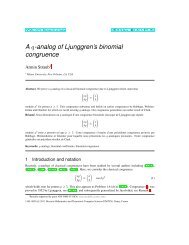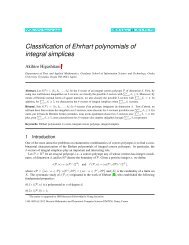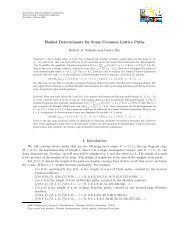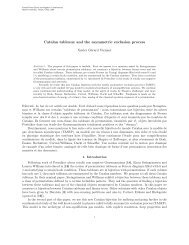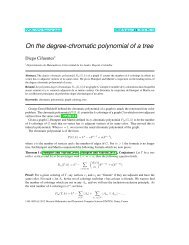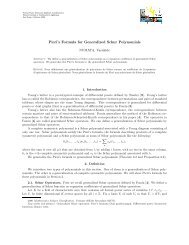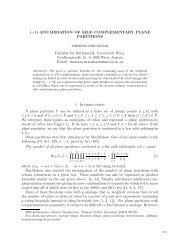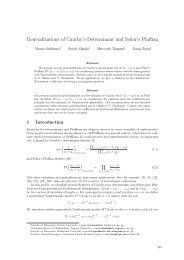Euler's partition theorem and the combinatorics of -sequences
Euler's partition theorem and the combinatorics of -sequences
Euler's partition theorem and the combinatorics of -sequences
You also want an ePaper? Increase the reach of your titles
YUMPU automatically turns print PDFs into web optimized ePapers that Google loves.
Question: When l = 2, several refinements <strong>of</strong> Euler’s <strong><strong>the</strong>orem</strong><br />
follow from Sylvester’s bijection. What refinements <strong>of</strong> <strong>the</strong> l-Euler<br />
<strong><strong>the</strong>orem</strong> can be obtained from <strong>the</strong> bijection? We have some partial<br />
answers, but here’s one we can’t answer:<br />
Sylvester showed that if, in his bijection, <strong>the</strong> <strong>partition</strong> µ into odd<br />
parts maps to λ (distinct parts), <strong>the</strong>n <strong>the</strong> number <strong>of</strong> distinct part<br />
sizes occurring in µ is <strong>the</strong> same as <strong>the</strong> number <strong>of</strong> maximal chains<br />
in λ. (A chain is a sequence <strong>of</strong> consecutive integers.) Is <strong>the</strong>re an<br />
analog for l > 2?



